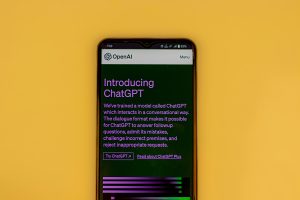Google just released a 68-page guide on prompt engineering. Here are the most interesting takeaways
Unlocking the Art of Prompt Engineering: Insights from Google’s Comprehensive Guide
Google has recently published an extensive 68-page guide focusing on the nuanced field of prompt engineering. This guide serves as an invaluable resource, offering insights that cater to both novices and seasoned AI practitioners alike. After diving into the material, I’ve gathered some key takeaways that can significantly enhance your approach to creating effective prompts.
Key Insights on Effective Prompt Engineering
-
High-Quality Examples Matter: Leveraging few-shot prompts can effectively communicate the desired format and tone. Introducing edge cases is beneficial; however, caution is advised to avoid overfitting models to these scenarios.
-
Simplicity is Key: Begin with straightforward prompts that are clear and concise. Using action-driven language tends to yield better outcomes—eliminating ambiguity can greatly enhance the quality of responses.
-
Define Your Output: Specify the expected structure, style, and length of the response you seek. For instance, instruct the model to “provide a 3-sentence summary in bullet points” for clarity.
-
Opt for Positive Instructions: Direct the model on what it should do rather than what it shouldn’t, unless dealing with safety guidelines. This approach fosters better results.
-
Utilize Variables for Flexibility: Incorporate placeholders (such as names and dates) to create prompts that are reusable and adaptable to various contexts.
-
Experiment with Various Input Styles: Different formats, such as tables, lists, and schemas like JSON, can effectively guide the model’s attention and responses.
-
Continuous Testing is Essential: Different iterations of models may behave distinctly. What proved effective with GPT-3.5 may not translate the same way with GPT-4.1, making ongoing experimentation crucial.
-
Request Structured Outputs: When you seek data in formats like JSON or CSV, you often simplify parsing and significantly reduce the need for follow-up adjustments.
-
Collaborate for Better Results: Working alongside others on prompt creation not only fosters a more efficient process but also uncovers novel patterns and insights.
-
Use Chain-of-Thought (CoT) Wisely: When incorporating CoT prompts, maintain simplicity with phrases like “Let’s think step by step.” Avoid overusing this technique, especially with models adept in reasoning.
-
Document Your Progress: Keep a detailed log of changes, results, and tweaks. This practice will














Post Comment